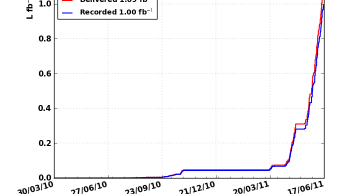In the LHC, groups of 100 billion protons collide 25 million times every second. But most of these protons miss, so each time we point the protons at each other doesn't give us 100 million proton-proton collisions. In fact, collisions are much…
The LHC circulates protons inside its beam-pipes not in a continuous stream but in several very closely packed bunches. In order to maximise the probability of the tiny protons colliding with one another, the LHC tries to pack as many protons as it…
CMS has just passed another major milestone, recording more than 10 inverse femtobarns of data at 8 TeV.
Despite higher pile-up creating more complicated events, CMS improved its running efficiency and now regularly achieves efficiencies in excess…
The LHC began its 2012 run in early April, colliding protons at a world-record centre-of-mass energy of 8 TeV[1]. In just over two months, CMS has recorded more data than in the 2011 run. As of the short technical stop starting June 18, the LHC…
At about half-past five in the evening on Sunday, 30th October, an e-mail from Run Coordination to the CMS collaboration said:
At 17:00 today the LHC dumped the last proton beams for the year to start the machine development period and to prepare…
At 17:00 on Sunday 30th October the LHC dumped the last proton beams
for the year to start the machine development period
and to prepare for heavy ion running. This means that we have
come to the end of proton operation for 2011.
In 2011 the LHC…
The LHC has now delivered 5 inverse femtobarns (fb−1) of data in 2011, of which CMS has collected 4.53 fb−1.
The LHC has now delivered over 4 inverse femtobarns (fb−1) of data in 2011, of which CMS has collected 3.7 fb−1.
Over the course of 16.5 hours ending Wednesday, Sept. 14, the CMS experiment recorded 113.4 inverse picobarns of data, more than three times the 36 inverse picobarns it recorded in all of 2010. The detector's data-taking efficiency was impressively…
The number of events that an experiment observes is proportional to a quantity called the luminosity — a measure of how many collisions are occurring in the detector. An accelerator operating at high luminosity stands the best chance of producing…
This year's LHC physics run started in March. Since then the machine has broken many records, bringing its luminosity — the number of proton-proton collisions per second — to much higher levels than expected for this year. CMS now can take as much…

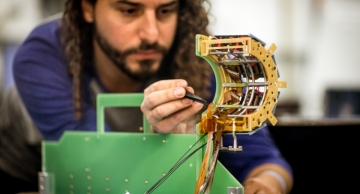
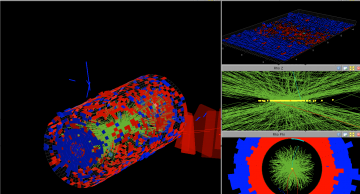
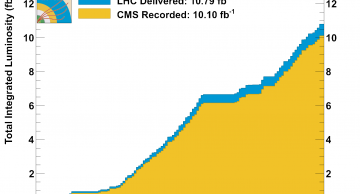
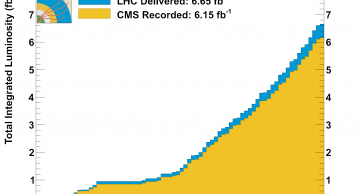
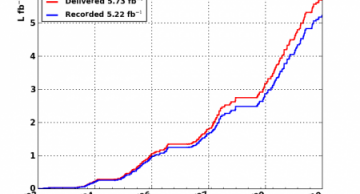
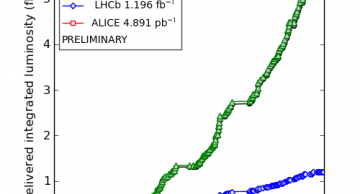
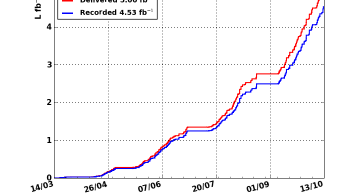
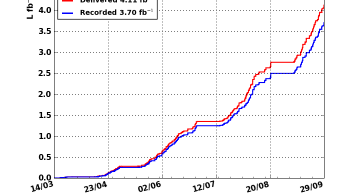
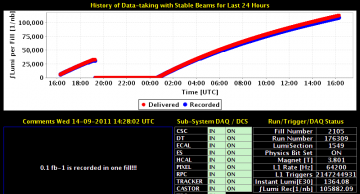
![Luminosity for 2011, showing delivered [red] and recorded [blue] values. Luminosity for 2011, showing delivered [red] and recorded [blue] values.](/sites/default/files/styles/grid3_360x195_/public/field/image/totallumivstime-2011.png?itok=xjFE0W6g)
